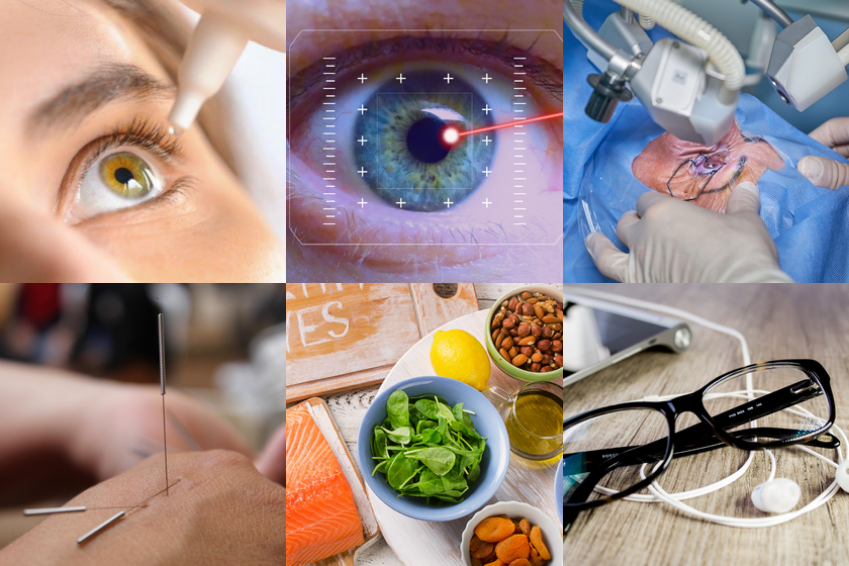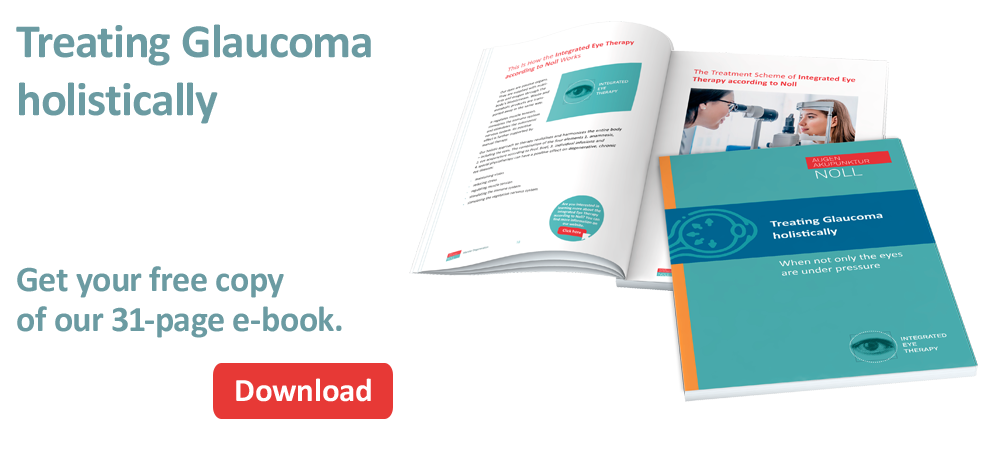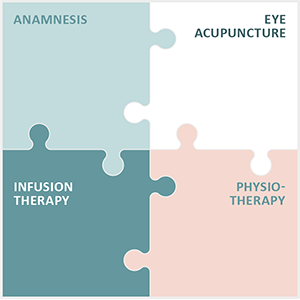Ocular hypertension treatment

Ocular hypertension treatment – we give a complete overview of the different treatment methods for angle-closure glaucoma
The approach of doctors and therapists to the treatment of ocular hypertension – i.e. increased intraocular pressure – often involves initial observation. They assess the risk based on existing factors to determine whether the increased intraocular pressure could lead to glaucoma.
Basic strategy for ocular hypertension treatment
This is of crucial importance as damage to the optic nerve is irreversible. In summary, the basic strategy is to wait, monitor and check the increased intraocular pressure at regular intervals. Examinations such as intraocular pressure measurement, ophthalmoscopy, perimetry and other procedures can be used.
Occasionally, however, treatment for ocular hypertension is required, in particular to reduce the increased intraocular pressure and prevent damage to the optic nerve. This usually involves the use of medication that acts locally in the eye in the form of eye drops. In rarer cases, systemically acting tablets can also be used.
The different classes of drugs for ocular hypertension treatment
There are different classes of medication that can reduce intraocular pressure in different ways. The most important groups of drugs are
- Beta-blockers: which reduce the production of aqueous humour
- Prostaglandins: which increase the outflow of aqueous humour
- Alpha agonists: which both reduce aqueous humour production and increase outflow
- Carbonic anhydrase inhibitors: which reduce the production of aqueous humour
- Cholinergics: which increase the outflow of aqueous humour
It is possible to combine these medications with each other, and in the event of intolerance it is possible to switch to a different medication.
Options for ocular hypertension treatment
There is also the option of improving the outflow of aqueous humour using a laser (laser trabeculoplasty). In individual cases, surgical interventions can also be considered to reduce intraocular pressure. These are particularly recommended if an operation to remove cataracts (clouding of the lens of the eye) is already planned and can be combined with this.
Customised concepts for ocular hypertension – Integrated Eye Therapy according to Noll
The treatment of ocular hypertension requires a deep understanding of the mechanisms of intraocular pressure and its effects on vision. At Eye Acupuncture Noll, we address this issue with the Integrated Eye Therapy according to Noll, which was developed by Michaela Noll to offer differentiated and patient-centred treatment. Our approach is characterised by:
- A detailed anamnesis to identify the specific risk factors and the individual course of the disease.
- Eye acupuncture according to Prof Boel, which is a key component of our therapy.
- Customised infusions that are tailored to the individual requirements of our patients.
- Targeted physiotherapy aimed at improving the patient’s overall condition.
Through these four elements of the Integrated Eye Therapy according to Noll, we strive to minimise the effects of ocular hypertension and support the health of your eyes. For 13 years, we have endeavoured to meet the needs of our patients worldwide and to find the best way to treat them through individual therapy design.
While drug therapies such as eye drops or systemic medications often serve as a first-line treatment, we can play a supporting role by complementing the traditional view with alternative methods.
The trust and satisfaction of our patients is reflected in the positive feedback we have received over the years, which encourages us to continue developing Integrated Eye Therapy according to Noll.
We understand that every treatment is a personal decision based on a sound diagnosis and consultation. We therefore emphasise that we do not make unrealistic promises, but work with you to develop realistic goals. Our aim is to provide you with comprehensive information and support you on the path to stable eye health.


